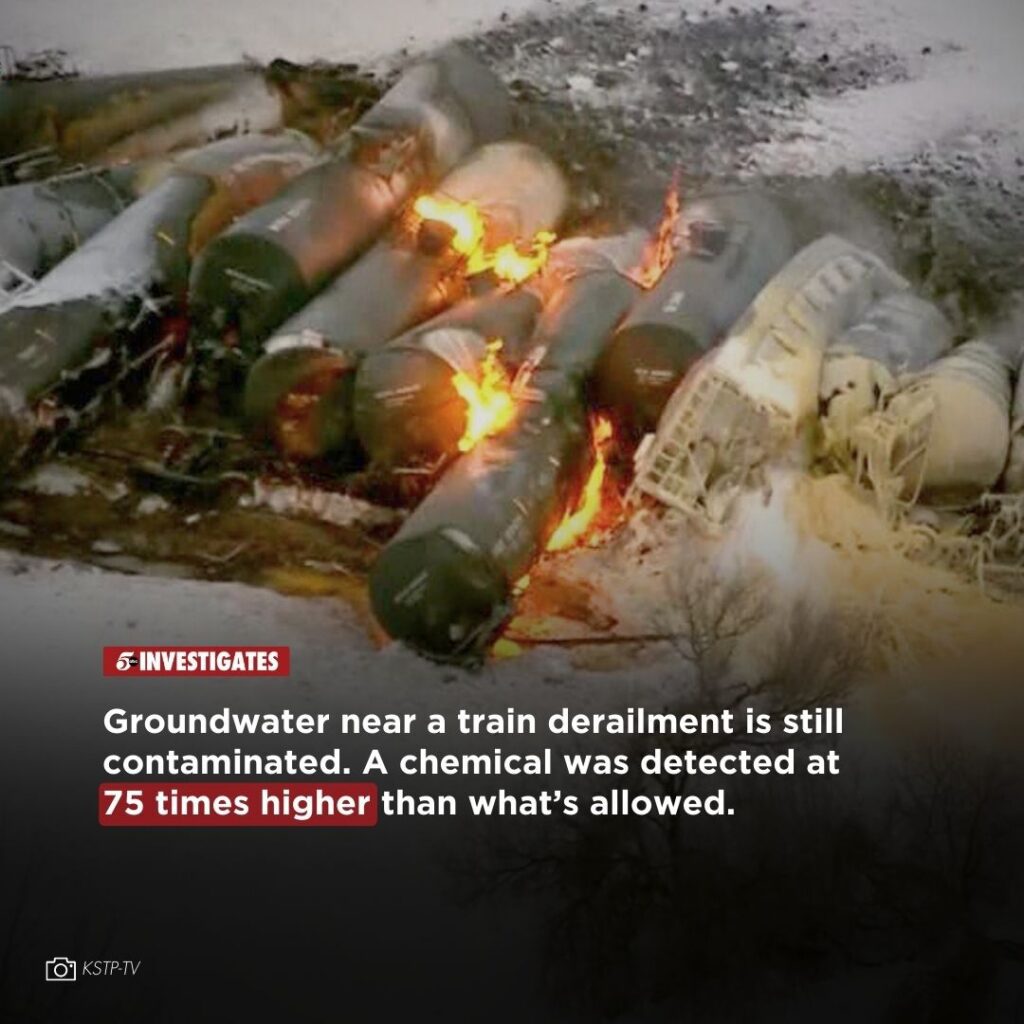Groundwater is still contaminated months after a BNSF derailment in Minnesota. No one told the town.
Elevated levels of harmful chemicals are still contaminating the soil and groundwater near a small town in southwest Minnesota where a train derailed and spilled thousands of gallons of ethanol earlier this year.
The derailment of 23 Burlington Northern Santa Fe (BNSF) tanker cars forced the town of Raymond to evacuate in March. Officials downplayed environmental risks at the time because the fire was expected to burn up most of the chemicals before they could leak into the frozen ground.
However, an environmental report recently obtained by 5 INVESTIGATES shows the chemical benzene — which is known to cause cancer — was detected in the groundwater at levels nearly 75 times higher than what’s allowed under state health standards.
Now, the railroad is required to drill more wells to track whether the contamination is spreading, according to the Minnesota Pollution Control Agency (MPCA).

“As far as I’m aware, no one is using this water for anything,” said Tyler Boley, an environmental specialist with MPCA. “Not for drinking, not for agricultural use, not for gardening, nothing. So as long as nobody is using this water or encountering it, there should be little risk to the population of Raymond.”
No alert
The findings, submitted to state regulators in September, were not apparently shared with the town of 800 people.
The town’s mayor, Ardell Tensen, said he was unaware of the environmental report.
“I never received a call, email or anything,” he said.
Tensen added that he’s not overly concerned because the town’s drinking wells are not impacted.
Numerous other residents also told 5 INVESTIGATES they were not told about the contaminated groundwater.
“Have a town meeting, have something to keep people informed,” Raymond librarian Cheri Wollschlager said. “I mean, this is our health we’re talking about.”
BNSF did not respond when 5 INVESTIGATES asked about the concerns over the lack of communication.
The MPCA, which is overseeing the rail giant’s cleanup efforts, said its role is to guide and assist BNSF “to ensure it properly deployed its emergency response plan.”
Anne Borgendale, communications director with Clean Up the River Environment (CURE), said the MPCA should have alerted people who live near the derailment even if they believe the leak is contained and will have minimal impact.
“If nothing else, just to allay people’s fears,” she said.
Continued monitoring
Last month the National Transportation Safety Board found a “catastrophic” rail failure on the BNSF line caused the derailment.
As 5 INVESTIGATES previously reported, that section of track — known as the Marshall Subdivision — had a history of defects that led to employee complaints, million-dollar lawsuits and federal safety violations.
After the March 30 derailment released 30,000 gallons of ethanol, excavators removed more than 500 tons of soil from the crash site.
Continued monitoring is necessary to ensure the leaked chemicals don’t spread through the groundwater and into a nearby creek, according to the MPCA.
The agency expects additional testing to be completed this month.
“We’re not currently expecting it to reach the creek in the near future,” Boley said. “They are trying to determine the extent and the magnitude of the benzene to make sure it’s not a risk in the future for either human health and the environment.”